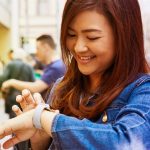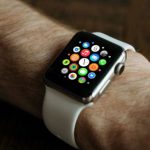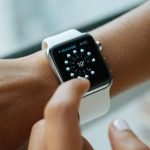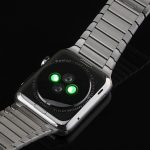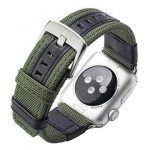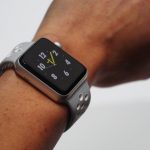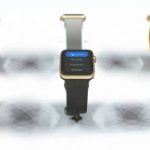Apple Watch And Other Trackers Are Still Missing A Vital Fitness Metric—Pain Factor
In the beginning they counted your steps, your distance, and your calorie burn. Then they counted your heartbeats. Some tried their luck at analyzing your sleep quality, with varying degrees of success.
Fitness trackers have been around for a few years now. Sensors have gotten better and cheaper. Algorithms have advanced. But what I’d argue is the most important fitness measurement—at least for aerobic stuff like running—has still not been added.
Let’s call it “pain factor,” the level and duration of physical strain or fatigue you feel while exercising.
Workouts come and workouts go. We come to our workouts at various times of the day and week, and with various body conditions—different amounts and quality of sleep, different types and amounts of fuel (food) in the tank, different stress levels. So that workout that seemed like a piece of cake on Monday morning can feel grueling on Thursday afternoon.
It’s that level of suffering we should be watching. The difference between someone who’s successful at working out well and consistently, and someone who isn’t, may be in their ability to understand pain level and their capacity for pain—and manage it accordingly.
You don’t need a device to tell you when you’re feeling the burn. But a device could put a number on it that’s based on real, measurable factors. “Pain factor” is a relative number, meaningful only in its relationship to other pain levels at other times.
How It Might Work
A pain algorithm would process some simple information that we, and our bodies, provide. It would need to know something about what I’d eaten that day. It might factor in the quality of my sleep the night before. Heart rate relative to the difficulty of the workout would likely be a factor.
Let’s say we can now look down at our wrist and see a “pain level” number from 1 to 10. What could we do with that? How could that help?
It could change the way you normally measure the quality of your workout. Instead of looking at basic metrics like pace, duration, or distance, you might begin seeing “quality” as the amount of time you maintained a specific activity at a given pain level.
Let’s say you haven’t worked out in a while and you’ve fallen out of shape. You might reach your pain factor norm well before you finish the normal time or distance of your workout. Time to stop.
On the other hand, if you’re having one of those good days when your body seems eager to work out, and you finish your normal workout before hitting your normal pain level, you might choose to tack an extra 10 minutes on to the end of the session.
It could serve as a motivation tool. Let’s say you’re a little tired when you start your normal 35-minute run around the park. And five minutes in you’re hurting. If you know you have, in the past, powered through the same run at the same pain level, it might make you think, “I’ve been here before; I know I can do this” and keep going.
On the same logic, pain (or, rather, too much of it) doesn’t always turn into gain. Many people work out too hard (often driven by guilt about not working out enough) and endure more than a workout’s worth of pain. That can have physical risks, like injuries from trying to lift too much weight when you’re tired.
The main risk might be psychological. It’s that high pain level you tend to remember after the fact, not the extra 20 minutes you spent on the treadmill. And that memory of physical—and mental—pain can make it mentally harder to get yourself back in the gym or back on the trail. And consistent workouts with moderate pain always trump infrequent, painful workouts.
Perhaps the main theme in the evolution of health wearables is their ability to go beyond giving users raw, static data like time and distance, and deliver meaningful, actionable insights that can directly impact performance and health. “Pain factor” might be an example of that. The new metric would result from data crunching a set of more basic static and real-time numbers—some provided by sensors, others provided by the user—to generate a meaningful number for the user.
Of course, even more useful would be a device that knows the meaning of that score so that it could say things like: “You’ve suffered enough today, Mark. Now hit the showers.”
Related Video: Are There Any Tech Products That Excite You?
Fast Company , Read Full Story
(20)

